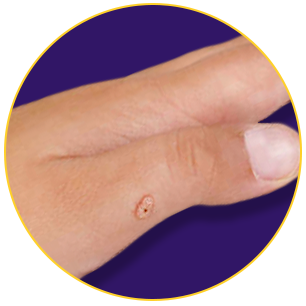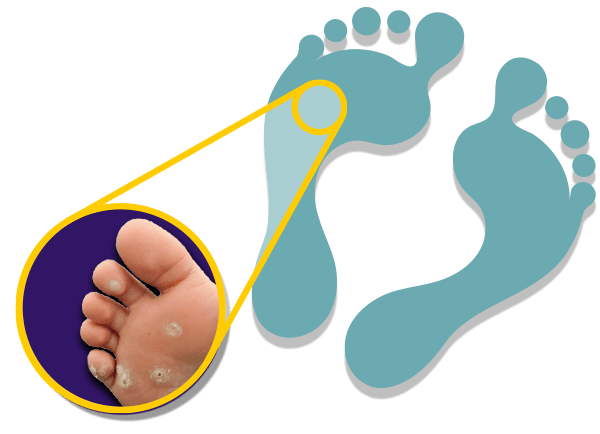Identify
Warts are small, skin-coloured, rough excess growths of skin. They can be as small as 1mm or as big as 1cm in diameter and can occur on their own or in clusters.
Common warts are the most frequently occurring type of wart (70% of all warts are common warts). The common wart is easily recognisable by the rough ‘cauliflower-like’ appearance of its surface.
We’re particularly prone to getting a wart if the skin on our hands is cut or scratched. The damaged skin makes it easier for the virus to enter once in contact with a contaminated surface.
Causes
Warts are caused by the human papilloma virus (HPV) which is highly contagious. They are very common in young children and there is a natural tendency for children to pick or scratch warts. This releases the virus, spreading the warts to unaffected skin and other people through physical contact.
Infection
The virus enters the skin through small cuts and scratches. Warts do not appear immediately following infection though - the incubation periods can be several months.
Location
Warts can appear anywhere on the body but they're most common on knuckles, knees and fingers.
Healing
If untreated, trouble-free warts will often disappear in time. But it's important to remember that they can be contagious and may spread elsewhere if left untreated.



